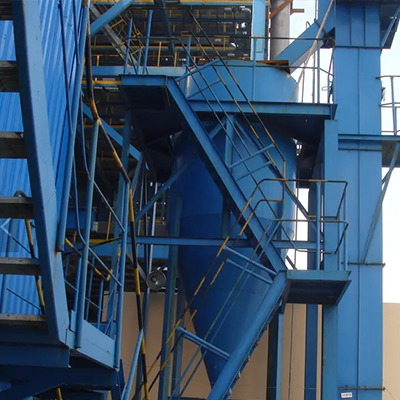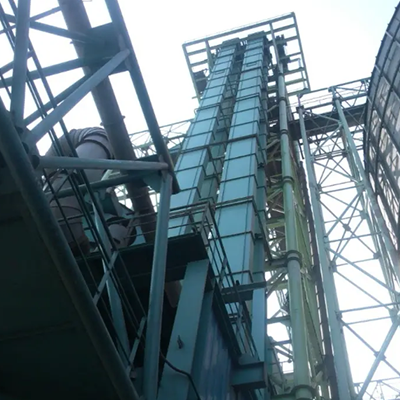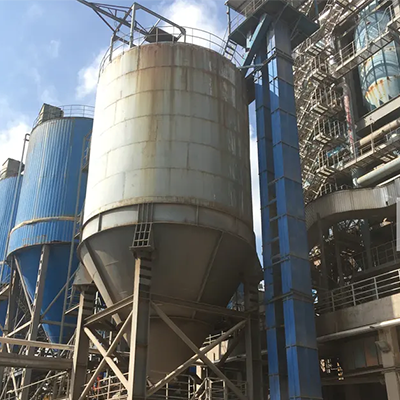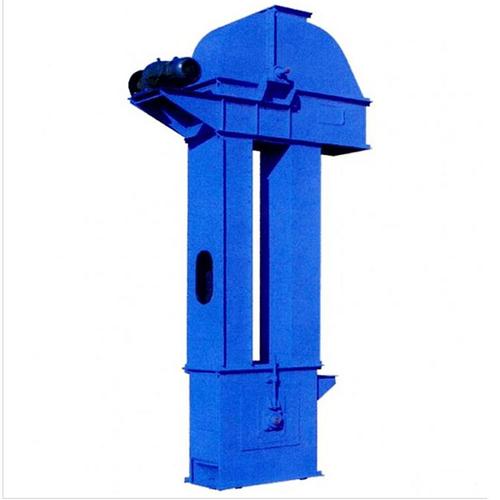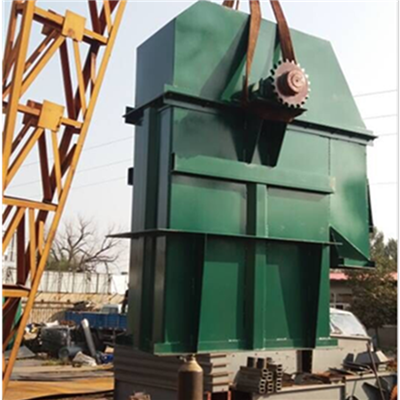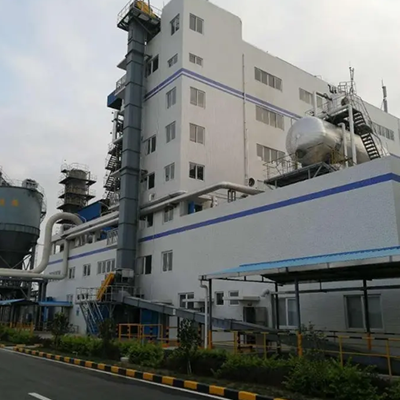
Bucket Elevator For Silo
Bucket Elevator For Silo
A bucket elevator for a silo is a type of vertical conveyor system used to transport bulk materials—such as grains, cement, fly ash, or other granular or powdered materials—from a lower level to a higher level, often for storage in a silo. These systems are widely used in industries such as agriculture, construction, power plants, and waste-to-energy plants.
Components of a Bucket Elevator
- Buckets: Attached to the belt or chain, the buckets carry the material. They are usually made of materials like steel, plastic, or reinforced polymer.
- Belt or Chain: The buckets are mounted on either a belt (rubber or fabric) or a chain (roller or link chain).
- Head Section: Contains the drive mechanism, including the motor, gearbox, and head pulley.
- Boot Section: Includes the bottom pulley and serves as the loading area for the material.
- Casing: The enclosed structure that protects the elevator and ensures efficient vertical transport.
- Discharge Chute: Guides the material from the buckets into the silo.
- Drive System: A motor and gearbox assembly that provides power for the elevator.
Types of Bucket Elevators
- Centrifugal Discharge: Best for handling dry, free-flowing materials. Material is thrown out of the buckets at high speed by centrifugal force.
- Continuous Discharge: Ideal for fragile or sluggish materials. Buckets are spaced closer together to provide a more controlled discharge.
- Positive Discharge: Designed for sticky or challenging materials. Uses a mechanism to actively discharge material from the buckets.
Advantages of Bucket Elevators
- Efficiency: Capable of handling large volumes of material vertically.
- Compact Design: Saves space compared to inclined conveyors.
- Versatility: Can handle various materials, from fine powders to large particles.
- Durability: Built to withstand harsh environments and abrasive materials.
Considerations for Design and Installation
- Material Characteristics: Abrasiveness, moisture content, and particle size influence the choice of bucket type and elevator design.
- Capacity Requirements: Determines the bucket size, speed, and overall elevator dimensions.
- Silo Height: Dictates the length of the elevator and power requirements.
- Environmental Conditions: Corrosion resistance and dust control measures may be necessary in certain environments.
- Maintenance: Easy access to components like buckets, belts, or chains for inspection and replacement is critical.
Bucket Conveyors – Bulk Handling | Material Handling Products
Introduction
TD Series Bucket Elevator (Belt type) uses belt as dragging device, mainly used for conveying material with bulk densityρ<1.5t/m³ in vertical direction, which can be powdery material, particles, small lump, less abrasive material. Use normal belt, the temperature of conveying material should not exceed 60℃, Use wire belt, conveying material temperature can reach 80℃, use heat resistant belt, material temperature not exceed 150℃, elevating height is 4~30m. Normal model of TD type bucket elevator is TD160、TD250、TD350、TD450 etc. The elevating height is 4.82~34m³/h. which is widely use in chemical engineering, metallurgy, construction material, mining industries etc.
Application:
Features
1. Widely usage, it can elevate powdery material, particles, small lump material.
2. Flexible to select mixing or centrifugal discharge method according to material properties.
3. Good sealing, no dust escape. Clean and environmental protection.
4. Using rubber belt with small dead load, flexible, stable operation, thus elevating speed and process efficiency is higher.
Technical Parameter
| Model | Type | Capacity (m³/h) | Hopper | Drive Revolving Speed | Max Size | Elevating Height | |||||
|---|---|---|---|---|---|---|---|---|---|---|---|
| Volume | Bucket Pitch | Bucket Width | Speed | ||||||||
| Deep Bucket | Shallow Bucket | Deep Bucket | Shallow Bucket | (mm) | (mm) | (m/s) | (r/min) | (mm) | (m) | ||
| TD160 | Belt Type | 16.00 | 9.0 | 1.20 | 0.49 | 350/280 | 160 | 1.40 | 67 | 25 | 4.28~39.28 |
| TD250 | Belt Type | 38.00 | 20.00 | 3.00 | 1.12 | 450/360 | 250 | 1.60 | 61 | 35 | 3.84~38.94 |
| TD315 | Belt Type | 42.00 | 28.00 | 3.75 | 1.95 | 500/400 | 315 | 1.60 | 61 | 45 | 4.298~38.798 |
| TD450 | Belt Type | 68.00 | 40.00 | 5.90 | 3.10 | 560/480 | 400 | 1.80 | 55 | 55 | 3.4-38.68 |
Note: The volume of the hopper in the table is the volume when the hopper is filled with water, which is similar to the actual filling volume. Therefore, the filling factor is not considered in the calculation formula of the conveying volume. The filling factor should be determined according to the particle size of the material in the specific selection, so as to correct the conveying volume given in this table.








